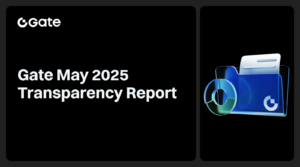Blockchain Interoperability and Security

Blockchain Interoperability and Security
Blockchain technology has gained significant attention and adoption in recent years due to its decentralized nature and potential to revolutionize various industries. However, as the number of blockchain networks increases, the need for interoperability between these networks becomes crucial. In this article, we will explore the concept of blockchain interoperability and its significance in achieving a truly connected and scalable blockchain ecosystem. Additionally, we will delve into the security considerations associated with blockchain interoperability and highlight some of the promising projects and technologies in this space.
Introduction to Blockchain Interoperability and Security
Blockchain interoperability refers to the ability of different blockchain networks to communicate and interact with each other seamlessly. It enables the transfer of assets and data across disparate blockchain platforms, facilitating collaboration and integration between various decentralized applications (dApps) and smart contracts. Blockchain interoperability is essential for unlocking the full potential of blockchain technology and realizing its promise of a decentralized and interconnected future.
Understanding Blockchain Interoperability
Definition and Importance
Blockchain interoperability involves establishing a common language and set of protocols that allow different blockchains to understand and interact with each other. It enables the exchange of assets, tokens, and data between different blockchain networks, eliminating the need for intermediaries and creating a more efficient and interconnected ecosystem. Interoperability plays a vital role in enabling cross-chain transactions, decentralized finance (DeFi) applications, supply chain management, and other use cases that require seamless integration between multiple blockchains.
Challenges and Limitations
Achieving blockchain interoperability is not without its challenges. One of the primary obstacles is the lack of standardized protocols and frameworks for seamless communication between different blockchains. Each blockchain network typically operates on its own set of rules and protocols, making it challenging to establish a universal standard for interoperability. Additionally, differences in consensus mechanisms, programming languages, and data structures further complicate the interoperability landscape.
Types of Blockchain Interoperability Solutions
Several solutions and approaches have emerged to address the challenges of blockchain interoperability. Let’s explore some of the most prominent ones:
- Interoperability Protocols
Interoperability protocols, such as Polkadot and Cosmos, aim to create a framework that allows different blockchains to connect and share information securely. These protocols act as a bridge between blockchains, enabling the transfer of assets, tokens, and data across different networks. They provide a standardized set of rules and protocols for interoperability, ensuring seamless communication and collaboration.
- Cross-Chain Bridges
Cross-chain bridges enable the transfer of assets and tokens between two or more blockchain networks. These bridges act as connectors, facilitating the secure transfer of digital assets across different chains. Cross-chain bridges utilize various techniques, including atomic swaps and hashed time-locked contracts (HTLCs), to ensure the integrity and security of cross-chain transactions.
- Sidechains and Pegged Assets
Sidechains are parallel blockchain networks that are connected to a main blockchain, allowing for the transfer of assets between the main chain and the sidechain. This approach enables scalability and faster transaction processing by offloading some of the computational load to the sidechain. Pegged assets, on the other hand, are tokens or assets that are issued on one blockchain but represent a corresponding value on another blockchain. These pegged assets enable the transfer of value and assets between different blockchains.
Benefits of Blockchain Interoperability
The adoption of blockchain interoperability brings several benefits to the overall blockchain ecosystem. Let’s explore some of these advantages:
- Enhanced Scalability
Blockchain interoperability allows for the seamless transfer of assets and data across multiple blockchains. By enabling interoperability, the scalability of individual blockchains can be enhanced, as some of the transaction load can be offloaded to other interconnected networks. This distributed approach to processing transactions can significantly improve the overall scalability and throughput of the blockchain ecosystem.
- Expanded Use Cases
Interoperability opens up a plethora of new use cases and opportunities for blockchain technology. It enables the integration of decentralized applications across multiple blockchains, creating a more comprehensive and interconnected ecosystem. For example, interoperability can facilitate cross-chain decentralized finance (DeFi) applications, where users can access a wide range of financial services and assets from different blockchains seamlessly.
- Improved Data Privacy and Security
Blockchain interoperability solutions are designed to ensure the secure transfer of assets and data between different networks. By leveraging cryptography and decentralized consensus mechanisms, interoperability protocols and bridges provide a high level of data privacy and security. This is especially crucial when handling sensitive information or transferring valuable assets across blockchains.
Security Considerations in Blockchain Interoperability
While blockchain interoperability offers numerous advantages, it also introduces new security considerations that need to be addressed. Here are some key factors to consider:
- Consensus Mechanisms
Different blockchains may employ different consensus mechanisms, such as proof-of-work (PoW) or proof-of-stake (PoS). When transferring assets or data across different networks, it is essential to ensure compatibility between consensus mechanisms to maintain the security and integrity of transactions.
- Smart Contract Audits
Smart contracts play a crucial role in blockchain interoperability, facilitating the execution of transactions and the transfer of assets between different blockchains. It is imperative to conduct thorough audits of smart contracts to identify and mitigate potential vulnerabilities or security risks.
- Secure Key Management
Proper key management is essential in maintaining the security of cross-chain transactions. Users should employ robust cryptographic practices and secure storage solutions to protect their private keys when interacting with multiple blockchains. Failure to secure private keys can lead to unauthorized access and potential loss of assets.
Promising Projects and Technologies in Blockchain Interoperability
The blockchain industry has witnessed the emergence of several promising projects and technologies focused on blockchain interoperability. Let’s explore some of these initiatives:
- Polkadot
Polkadot is a multi-chain platform that enables different blockchains to interoperate seamlessly. It provides a scalable and secure environment for creating decentralized applications that can interact with other blockchains within the Polkadot ecosystem. Polkadot’s innovative design allows for the transfer of assets, tokens, and data between different blockchains while maintaining a high level of security and interoperability.
- Cosmos
Cosmos is a decentralized network of interconnected blockchains, aiming to create an “Internet of Blockchains.” It provides a framework for building and connecting sovereign blockchains, enabling them to communicate and transact with each other. Cosmos utilizes the Inter-Blockchain Communication (IBC) protocol, which allows for the secure transfer of assets and data between different chains.
- Ripple
Ripple is a blockchain-based payment protocol that focuses on facilitating fast, low-cost international transactions. While primarily known for its cross-border payment solutions, Ripple also aims to enhance blockchain interoperability. Its Interledger Protocol (ILP) enables the transfer of value and data across different blockchain networks and traditional financial systems.

Best Practices for Ensuring Interoperability and Security
To ensure successful blockchain interoperability and maintain a high level of security, it is essential to follow best practices. Here are some recommendations:
- Standardization Efforts
Standardization plays a crucial role in establishing a common framework for blockchain interoperability. Collaborative efforts among industry stakeholders, such as standardization bodies, blockchain consortia, and development communities, are essential to define interoperability protocols, data formats, and communication standards.
- Interoperability Testing
Thorough testing is crucial to identify and address potential issues or vulnerabilities in interoperability solutions. Interoperability testing involves validating the functionality and compatibility of blockchain networks, protocols, and bridges to ensure seamless communication and secure asset transfers.
- Continuous Monitoring and Auditing
Regular monitoring and auditing of blockchain networks and interoperability solutions are essential to detect and mitigate any security risks or vulnerabilities. Continuous monitoring allows for the timely identification of potential threats or attacks, ensuring the integrity and security of cross-chain transactions.
Future Outlook of Blockchain Interoperability and Security
The future of blockchain interoperability looks promising, with increasing adoption and integration across the industry. As blockchain technology continues to evolve, interoperability solutions will play a crucial role in creating a connected and scalable ecosystem. We can expect the development of more advanced protocols, bridges, and technologies that enhance interoperability and address the security challenges associated with cross-chain transactions.
Conclusion
Blockchain interoperability is a critical aspect of unlocking the full potential of blockchain technology. It enables seamless communication and collaboration between different blockchain networks, expanding the use cases and enhancing the scalability of decentralized applications. However, ensuring the security of cross-chain transactions remains a significant consideration. By following best practices, leveraging innovative projects and technologies, and prioritizing data privacy and security, blockchain interoperability can revolutionize the way we exchange value and data in the digital era.
Frequently Asked Questions (FAQs)
- What is blockchain interoperability? Blockchain interoperability refers to the ability of different blockchain networks to communicate and interact with each other seamlessly. It allows for the transfer of assets, tokens, and data across disparate blockchain platforms, enabling collaboration and integration between decentralized applications.
- Why is blockchain interoperability important? Blockchain interoperability is crucial for creating a connected and scalable blockchain ecosystem. It expands the use cases of blockchain technology, enhances scalability, and facilitates the integration of decentralized applications across multiple blockchains.
- How does blockchain interoperability enhance scalability? By enabling the transfer of assets and data between different blockchains, interoperability reduces the burden on individual chains, enhancing their scalability. It allows for the distributed processing of transactions across multiple networks, increasing overall throughput.
- Are there any risks associated with blockchain interoperability? Blockchain interoperability introduces new security considerations. Differences in consensus mechanisms, vulnerabilities in smart contracts, and inadequate key management can pose risks. However, following best practices, conducting audits, and utilizing secure protocols can mitigate these risks.
- What are some promising projects in blockchain interoperability? Prominent projects in blockchain interoperability include Polkadot, Cosmos, and Ripple. These projects provide innovative solutions and protocols for seamless communication and secure asset transfers between different blockchain networks.

I have been in the industry for over 5 years. I know all the latest news and what is going on with different coins. I write about Bitcoin, Ethereum, Litecoin, and more.







